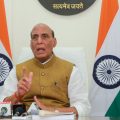Federal Reserve Chair Jerome Powell recently warned of likely higher long-term interest rates, citing the evolving economic landscape and ongoing policy adjustments. His remarks, delivered at the Thomas Laubach Research Conference, highlighted the significant changes since the Fed’s last policy framework review in 2020. The period has seen a surge in inflation, necessitating aggressive interest rate hikes. Despite longer-term inflation expectations aligning with the Fed’s 2% target, Powell anticipates the era of near-zero rates is over.
Powell emphasized the potential for increased volatility in inflation, suggesting a shift towards more frequent and persistent supply shocks. This presents a considerable challenge for both the economy and central banks. He drew parallels between his current statements and previous warnings about the balancing act between employment support and inflation control, echoing concerns about the impact of potential policy changes.
While not explicitly mentioning President Trump’s tariffs in his speech, Powell acknowledged the potential for tariffs to hinder growth and fuel inflation in recent days. The Fed’s reluctance to ease policy after cutting its benchmark rate last year underscores the complexities of the current economic climate. The ongoing framework review will aim to create a five-year plan, encompassing communication strategies and adjustments based on past experiences.
The upcoming review will focus on several key factors. These include refining communication strategies to manage public expectations and re-evaluating the approach to inflation and employment shortfalls. Powell acknowledged that while the Fed’s communication has generally been considered effective, there’s always room for improvement, particularly in handling more frequent or significant economic shocks. The goal is to more clearly convey the inherent uncertainties in economic forecasting and outlook.
Powell refrained from providing a specific completion date for the review, but indicated that the final report is expected in the coming months. The review will likely influence future policy decisions and communications, shaping the Fed’s response to economic challenges in the years to come. The ongoing uncertainty highlights the need for adaptable and transparent monetary policy in a world increasingly susceptible to unexpected economic disruptions.










